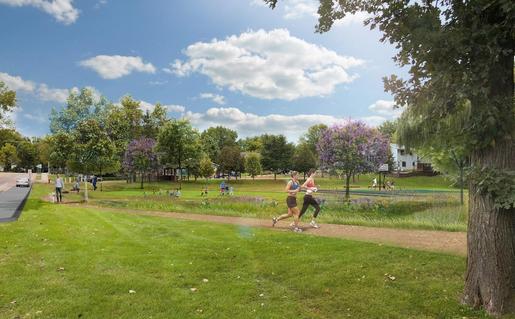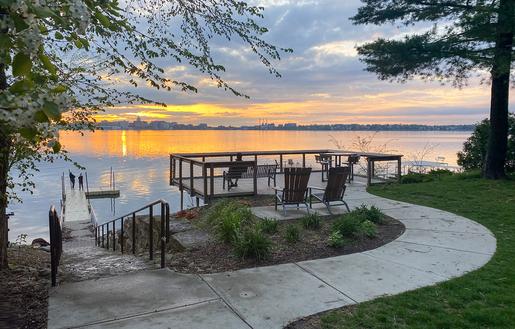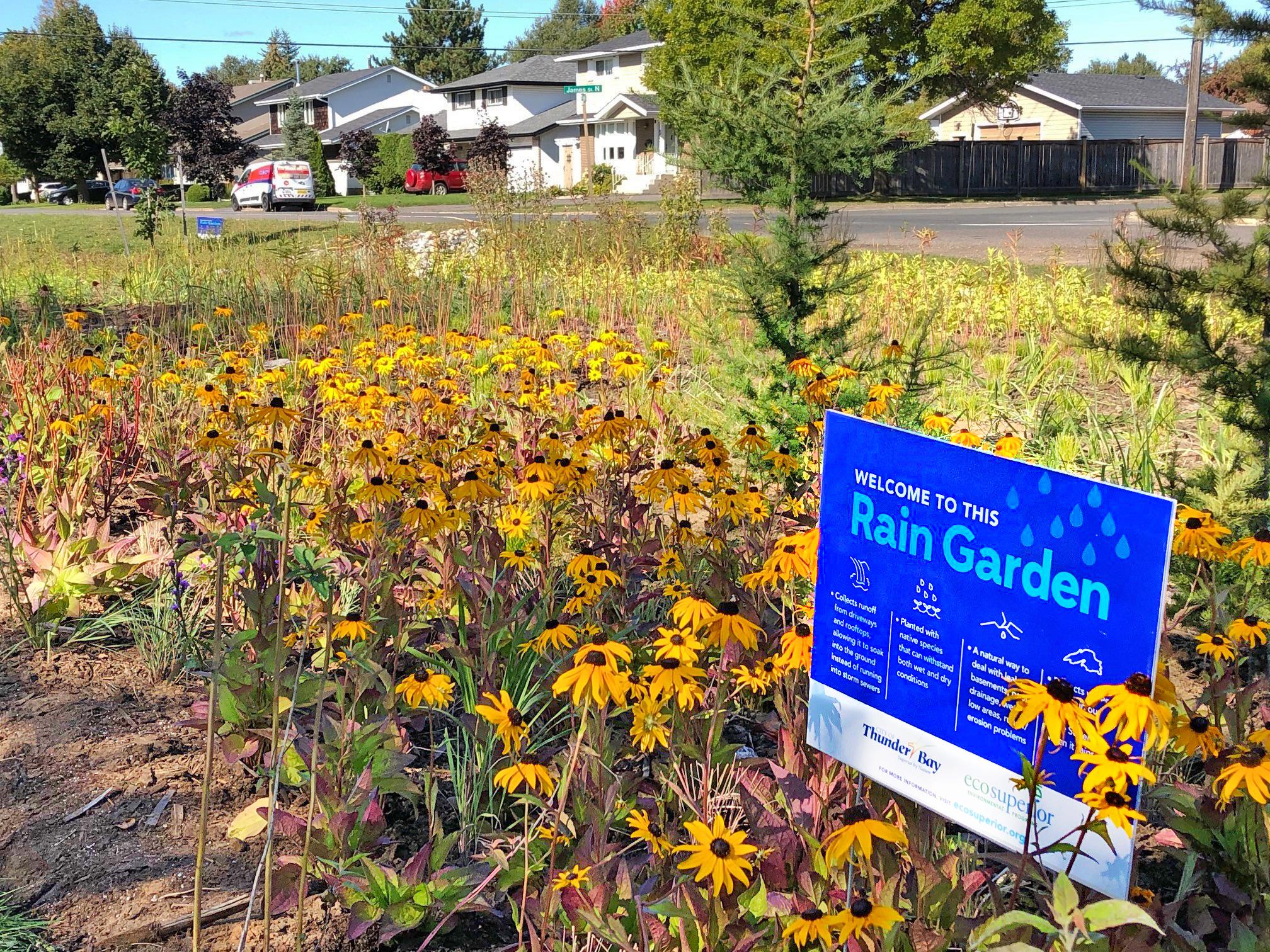
Green Infrastructure
Community Equity & Climate Resiliency Opportunities
EOR improves community resilience through the design and implementation of green stormwater infrastructure systems and practices. EOR’s focus on water resources provides unparalleled expertise in solving the challenges of water management through an interdisciplinary approachwhich provide immediate and long term benefits in this ever changing world such as heat reduction, air filtration, flood reduction, water quality improvement, and human health & well-being (among many others).
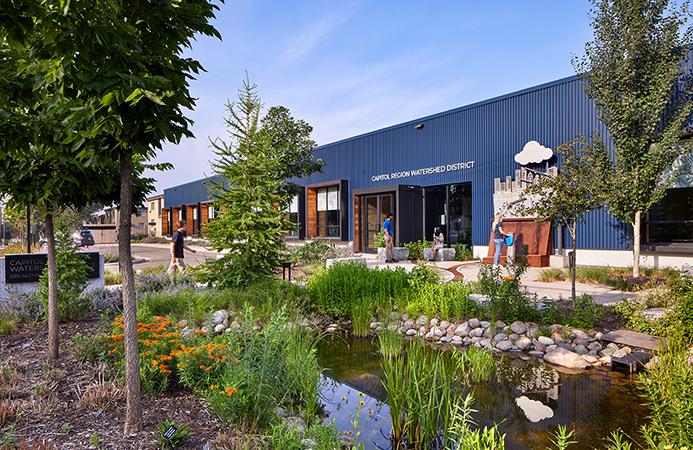
Capitol Region Watershed District (CRWD) - St. Paul, MN
A former industrial building site was transformed into the new offices of the CRWD. EOR designed the site to convey the mission of the organization, which is to protect water resources and to educate the public about water quality. The site is interwoven with accessible stormwater management BMPs such as permeable pavement, tree trenches, and bioretention basins. Also included are artistic, interpretive elements and an interactive exhibit powered by roof runoff.
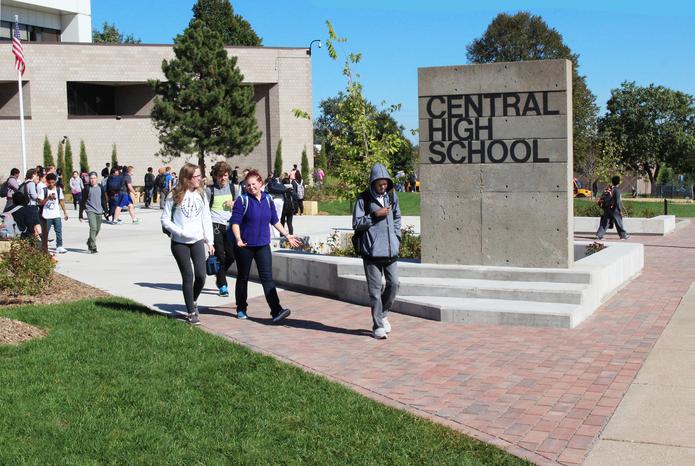
Transforming Central High School - St. Paul, MN
This was a community effort to reshape the urban landscape of Central High School in order to improve students’ daily experience, address the environmental impacts of the campus, and connect with the vibrant community that embraces the school. The design includes underground infiltration galleries, tree trenches, permeable pavers, and rain gardens to manage stormwater, while the new plaza area is defined by integrated seat-walls, additional planting areas, and an outdoor classroom.
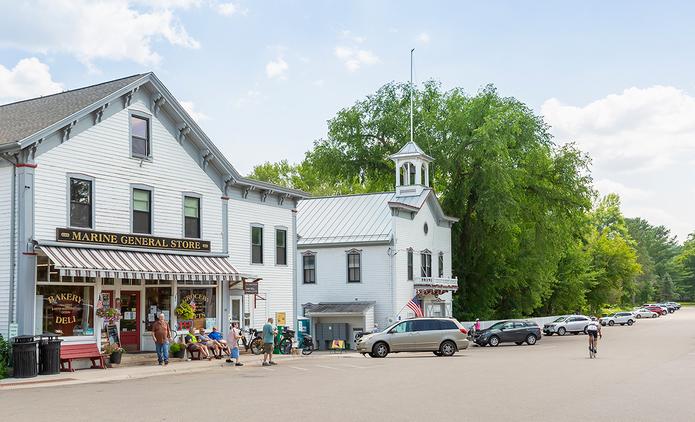
Green Infrastructure Plan - Marine on St. Croix, MN
EOR completed planning, design, and implementation of multiple stormwater BMPs throughout the village. Community meetings gathered input from residents and stakeholders. The BMPs were designed in conjunction with new road improvements to capture, filter, and infiltrate stormwater runoff before it flows to the nationally protected St. Croix River where a local swimming beach is located adjacent to the main stormwater outfall. Stormwater swales, rain gardens, and wetlands were planted with native plants, providing critical habitat for endangered pollinators.

